If you’ve implemented BDRSuite in your environment and think you’re finished, you might be mistaken. Following the implementation of a backup and restore strategy, it’s crucial to implement proper monitoring. Firstly, you want to know the health state of your backup infrastructure and the underlying layer. Secondly, you want to know whether the scheduled backup jobs have succeeded or failed.
This is where SMTP, or Simple Mail Transfer Protocol, comes into play. SMTP is a protocol used to send emails.
It is integrated into BDRSuite, and quite straightforward to configure.
In this article, I’ll demonstrate how to set up and use SMTP for your backup jobs. There are two steps, enabling SMTP and enabling email notifications.
Let’s start it.
Step 1: Enable SMTP on BDRSuite
In the first step, you will enable SMTP on your BDRSuite, and then configure SMTP settings. To do so, follow the procedure below.
- Log in to the BDRSuite web UI
- Navigate to the Backup Server and click on SMTP
- Enter the following settings and click Save
- SMTP Server – Enter the SMTP server you are using.
- SMTP Port – Enter the SMTP port.
- Authentication – Enable authentication by dragging the slider.
- Username – This is your email address.
- Password – This is your email password.
- Authentication Type – Leave it as default. You can manually select plain, login, CRAM-MD5, anonymous, and NTLM.
- Protocol Type – Leave it as default. You can manually select SSL and TLS.
- Sender Email ID
- After entering all the required information, verify the email server connection by clicking Test Email Server and entering the recipient’s email address. Then, click Send Test Email.
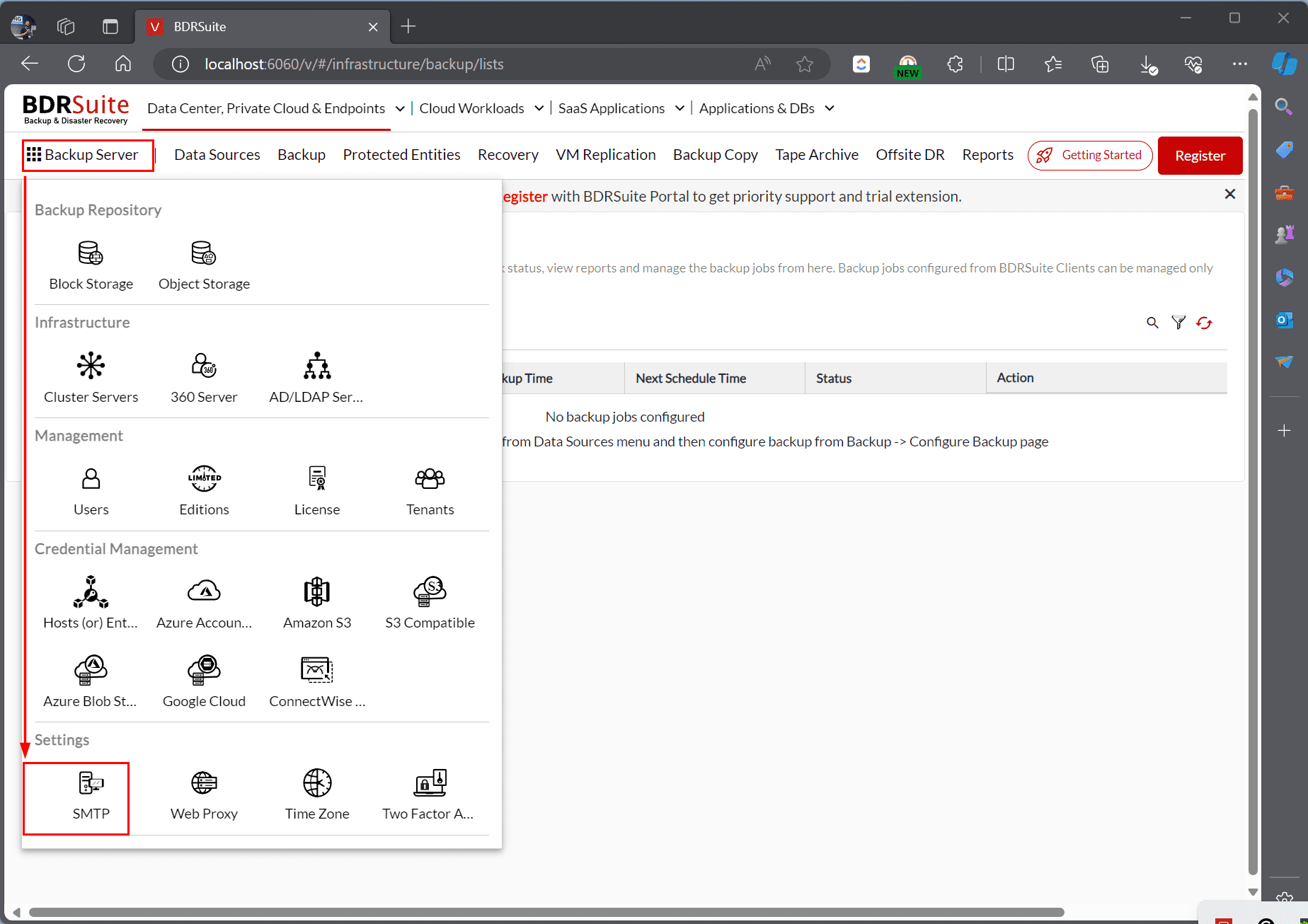
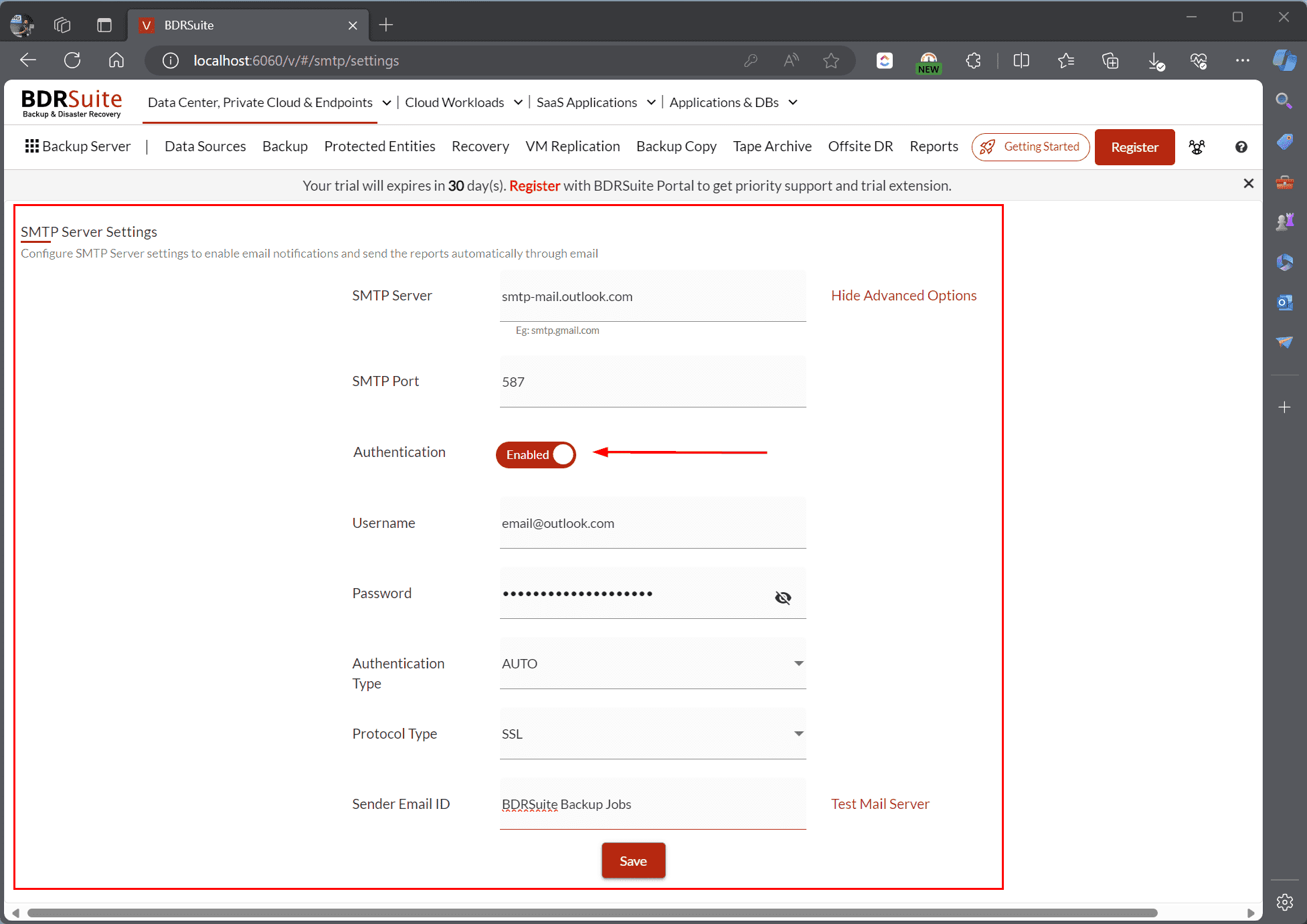
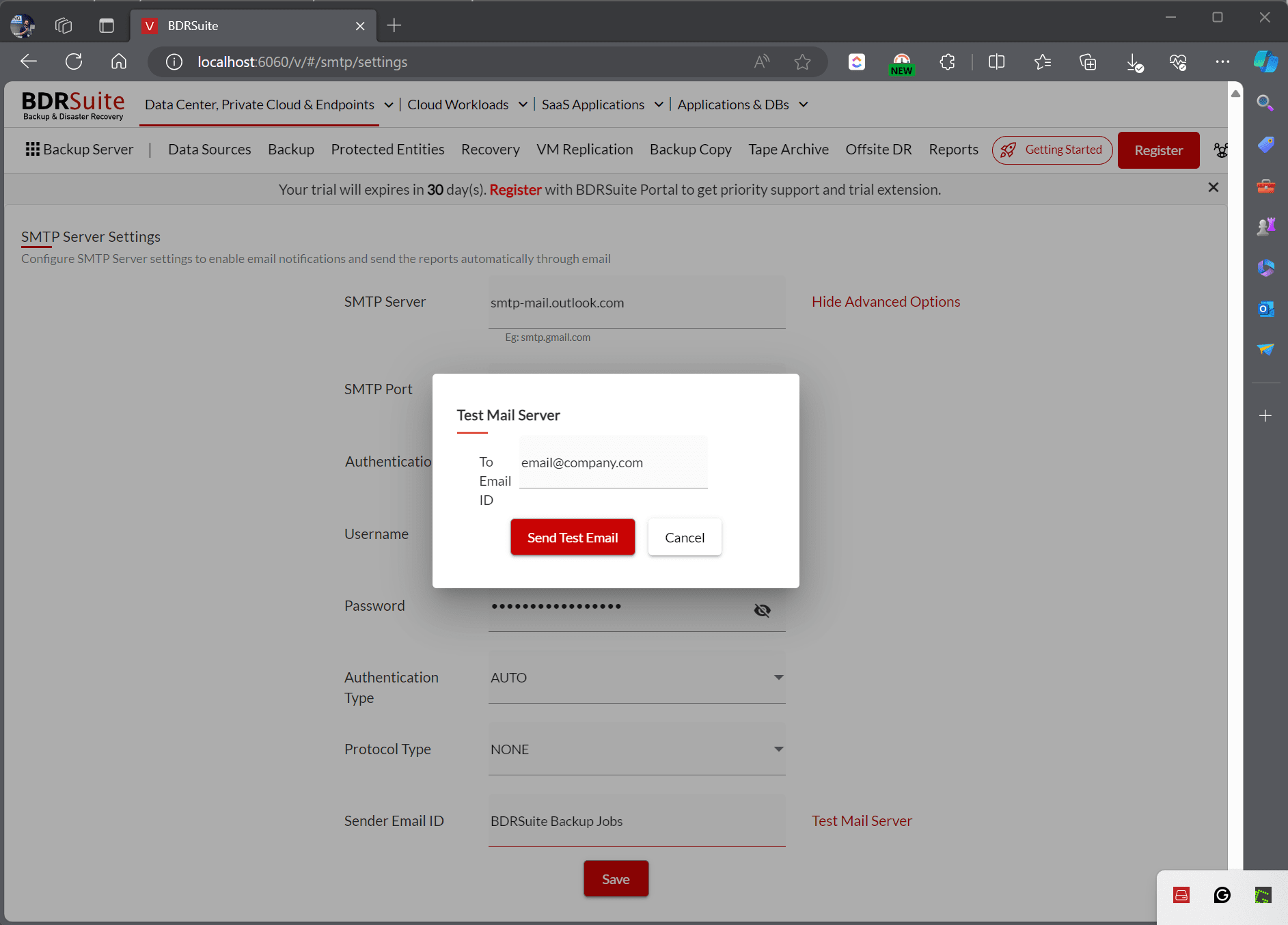
If all configurations are correct, you should receive a test email
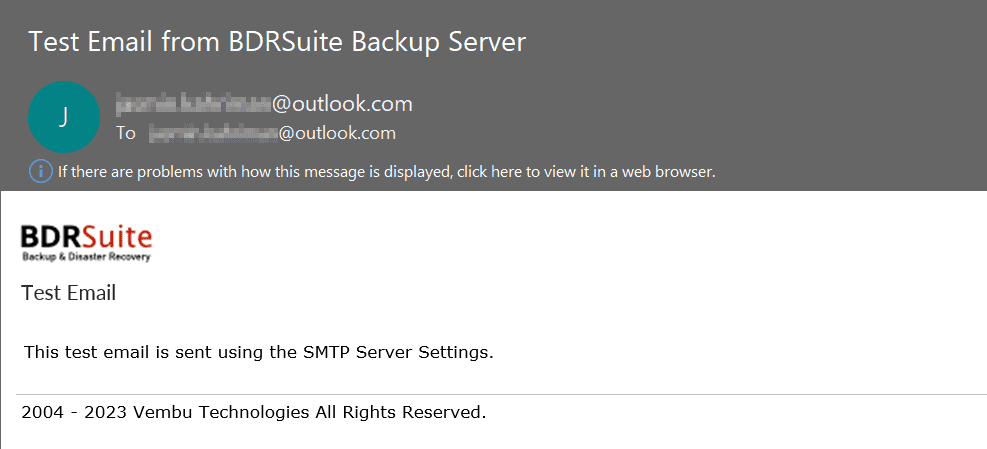
What if you are using different email providers?
In the example above, I used Outlook email and SMTP server settings. You can use any public email provider, as well as your own email SMTP server settings. Here are some of the popular email providers and their corresponding SMTP server settings.
Google:
- SMTP Server: smtp.gmail.com
- SMTP port: 587 (TLS), 465 (SSL)
Yahoo:
- SMTP Server: smtp.mail.yahoo.com
- SMTP port: 587 (TLS), 465 (SSL)
Apple (iCloud):
- SMTP Server: smtp.mail.me.com
- SMTP port: 587 (TLS), 465 (SSL)
AOL:
- SMTP Server: smtp.aol.com
- SMTP port: 587 (TLS), 465 (SSL)
Zoho:
- SMTP Server: smtp.zoho.eu
- SMTP port: 587 (TLS), 465 (SSL)
If you would like us to include SMTP settings for other email providers, please let us know in the comment section below.
Step 2: Enable and configure email notifications
We enabled SMTP and configured SMTP. However, BDRSuite still doesn’t know when to use it. So, in the second step, you will enable email notifications to receive an email whenever a backup job is finished successfully or fails.
- Login to BDRSuite
- Navigate to Data Center, Private Cloud & Endpoints > Reports > Email notifications
- Enter the following settings and click Save.
- Enable email notifications by dragging the slider.
- Select criteria for reports including: When Backup/Restore/Delete completes successfully, When Backup/Restore/delete fails, When a Backup is manually suspended, When Backup/Restore is partially completed, and When a Backup schedule is missed. BDRSuite will trigger an email whenever any of the selected criteria occur.
- Select Email Notification Recipients > Use the same Email ID for all the reports and enter your email in the Success and Failure fields.
- Select Success, Failed, Partial, Missed, and Delete under Email Notification for Endpoints.
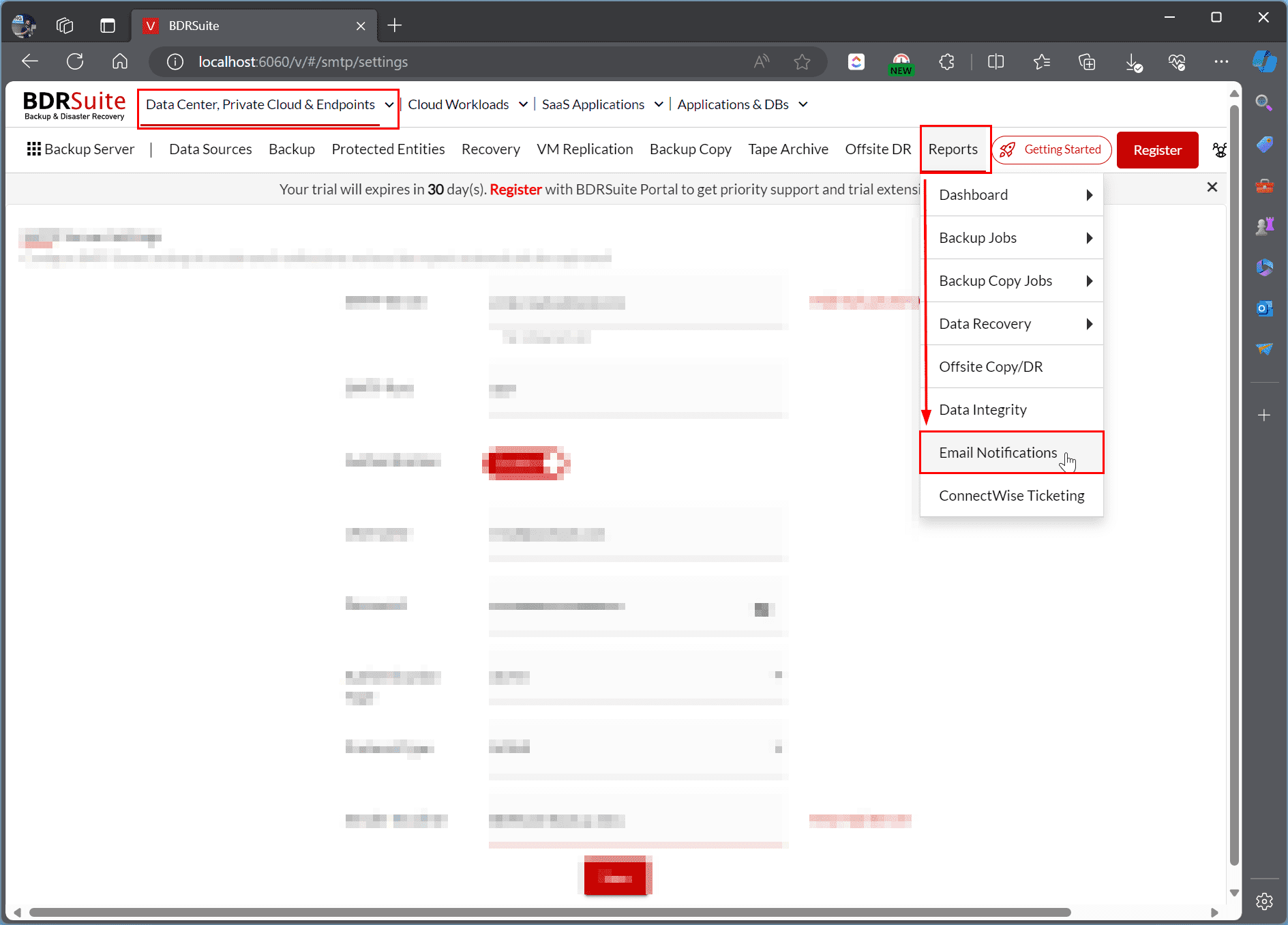
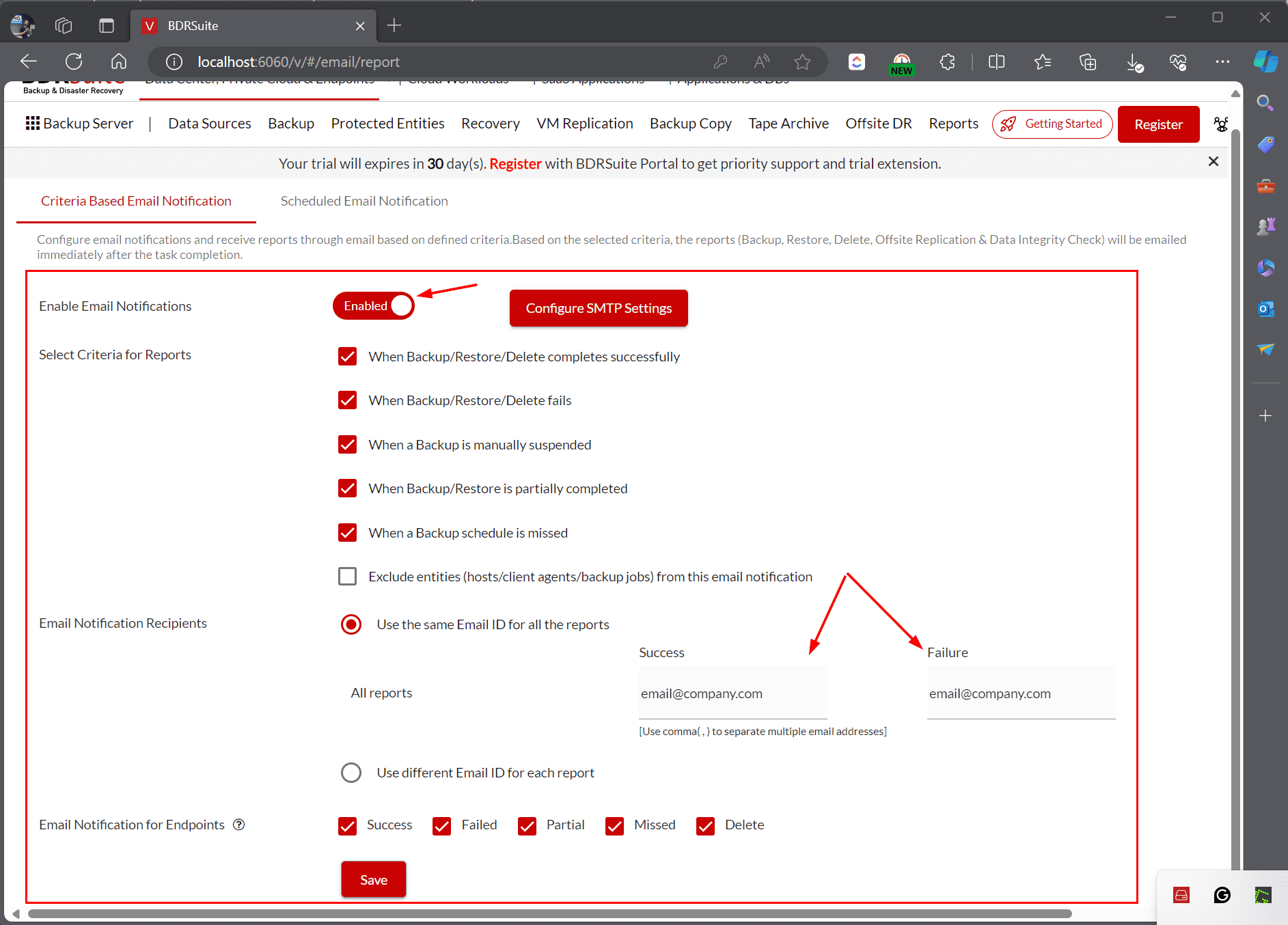
That is all for this step.
The Outcome
After configuring SMTP and email notifications, it’s time to see it in action. BDRSuite will send an email if a backup job succeeds or fails.
If it succeeds, you will see it as follows:
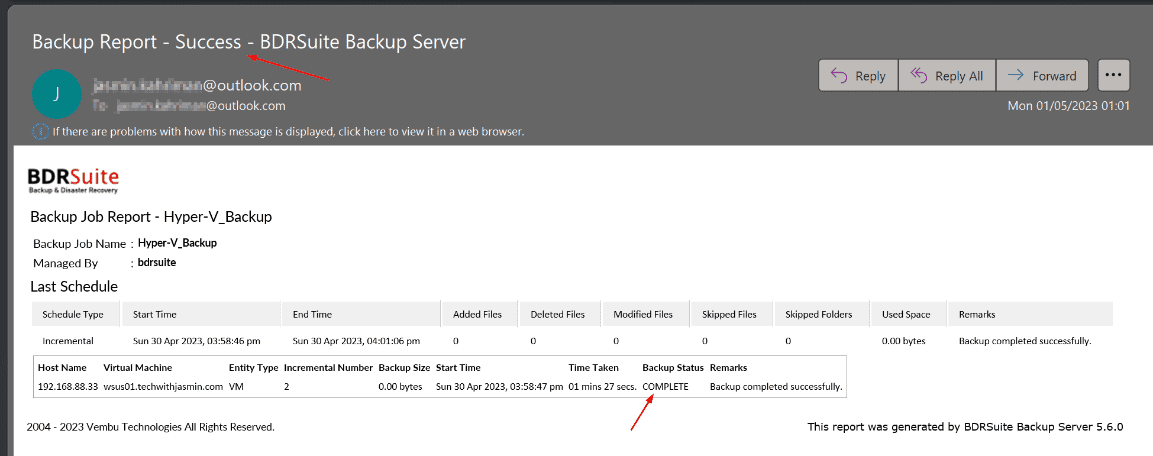
If it fails, you will see it as follows:
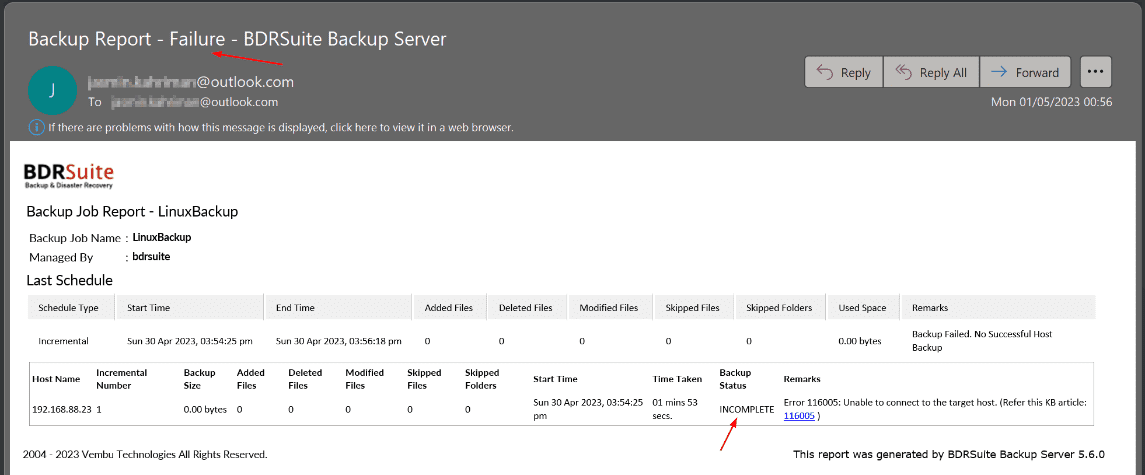
Yes, that was quite straightforward. Isn’t it?
Thank you for reading this guide, and please don’t hesitate to share it with anyone who might benefit from it.
Follow our Twitter and Facebook feeds for new releases, updates, insightful posts and more.



Leave A Comment